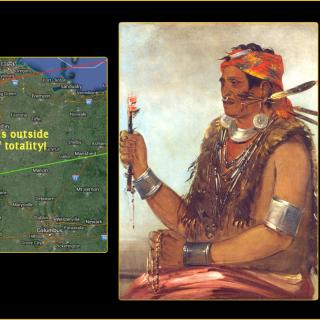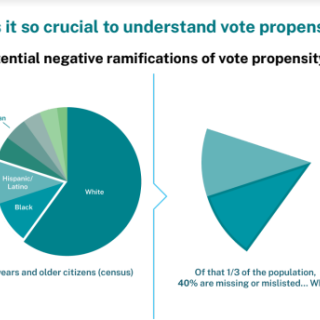Advertisement
A recent Reddit discussion framed an interesting dilemma: should members of a cooperative grocery store (in this case the Clintonville Community Market) remain loyal to their co-op or try to save money at the larger chain stores like the new Lucky's Market or Whole Foods? Full disclosure: I was one of the founders of the Clintonville Community Market, as was Simply Living, and I serve as a board member and interim director of Simply Living. As Chair of the Support Our Local Economy (SOLE) Coalition, I offer a "Localist" perspective that may help re-frame the dilemma posed in the Reddit discussion.
First-- Why do we have all these nonlocal chain stores? Not just grocery stores, but pharmacies, restaurants, hotels and big box stores for office supplies, hardware, clothing, appliances, books, media and computers - pretty much every sector of the retail economy, which is 70 percent of our total economy? Just 50 years ago, all these retail businesses were locally owned, and today each sector is dominated by chain stores.
What happened? It's no accident that the past 50 years have seen Ohio and the rust belt states lose half of our manufacturing base. The private sector responded to the growing environmental movement and the collective bargaining strength of labor unions by lobbying for government policies that allowed them to outsource our manufacturing and industrial base. Everything from clothing, household appliances, tools, toys and even the steel industry and technology sector went overseas to lower production costs by avoiding unions and environmental impact statements. This process weakened our towns and cities by eliminating jobs and reducing the tax base.
Weak local economies ripe for non-local stores. These negative impacts represented an opportunity for Wall Street and venture capitalists. The success of economic globalization and the flood of cheaper consumer goods gave rise to the chain stores that now dominate our local communities. Investors realized that they could import the consumer goods and services from abroad and sell them to local markets more cheaply than locally owned businesses. In the U.S. Roughly 50 percent of our local economic activity is now owned by non-local companies. Put another way, our communities have been "colonized" by non-locally owned businesses and their investors.
Impact on Columbus Metro Area. Ohio and the industrial heartland have outsourced an even greater percentage of the retail market. In Columbus and Franklin County our local economy has been reduced to about 35 percent, giving non-local businesses a 65 percent market share. A national survey comparing the market share of non-local versus locally owned retail businesses in all metro areas in the U.S. was conducted by Civic Economics. Columbus ranked close to the bottom in locally owned market share at #350 out of 363 metro areas. Among the 35 largest U.S. cities, Columbus ranked #34 in terms of locally owned businesses. According to Bill LaFayette of Regionomics, "Community Research Partners recently released a survey showing that the concentration and birth rate of our locally owned start-ups put us near the bottom among the 100 largest metropolitan areas." When entrepreneurs start a business in today's economy, they typically buy a franchise rather than try to compete with non-local businesses.
Why be concerned about this? The mainstream culture views this situation as positive because consumers have an amazing array of choices to purchase inexpensive goods and services. Leaving aside the view of environmentalists that the global economy is no longer sustainable, the local economy movement has documented that communities are actually weakened by non-local businesses.
SOLE has conducted a meta-analysis of research studies and concluded that roughly 25 percent of every dollar we spend in Franklin County is leaving our local economy to outside suppliers and investors. That 25 percent that leaves cannot recirculate and give us the benefit of what economists call the multiplier effect. A mere 10 percent shift in our shopping habits from chain to local would retain more than $300 million dollars in Franklin County, enough to create 5000 new jobs. This is because for every two jobs added when a non-local business enters the community, we suffer a net loss of three jobs. By shopping local, we become job creators.
Here's the good news... after this 50-year creation and evolution of the global consumer economy, a major shift toward economic Localization is underway. The trends are unmistakable. Local foods are exploding with renewed interest in farmers markets, community gardens, urban homesteading,
Community Supported Agriculture (CSAs), cooking classes and local restaurants that source local foods. Local business start-ups are on the rise, and the SBB (Small Business Beanstalk) is making it easier to find local shops in every neighborhood. Local Matters and ECDI (Economic and Community Development Institute) are building the local infrastructure for local foods. Micro lending from ECDI, Slow Money Ohio and OEFFA (Ohio Ecological Food and Farms Association) are supporting
entrepreneurs. And more of us are moving our money to credit unions such as KEMBA to keep our money local.
So where are we now? We are in a transition phase in all these sectors of the retail economy, but let's focus on the Local Foods marketplace. The success of large chain stores such as Whole Foods and Trader Joe's has greatly expanded the natural foods market. Whether you shop at Kroger, Giant Eagle or any mainstream grocery chain you will find "natural foods" sections, organic produce and sometimes locally sourced products. That certainly spreads awareness about healthy foods and expands the market for local and organic farmers who become suppliers. However, this transition also has brought about the acquisition of dozens of independent health food brands and consolidation by a small number of the largest food processing companies. Plus we remain faced with the same issue of purchasing from non-local stores that actually take our dollars out of the local economy and cause a net job loss.
How do we transition to Local? The local economy movement is new, about 20 years in the making. Awareness is spreading from the bottom up through Buy Local campaigns, Main Street Advocacy groups, AMIBA (American Independent Business Alliance) and coalitions like SOLE that are affiliated with the national Business Alliance for Local Living Economies (BALLE). These efforts are gaining traction and now have a presence in about 200 U.S cities. Changes at the policy level are emerging.
New legislation and best practices in economic development agencies encourage more procurement from local businesses, eliminate subsidies for non-local businesses seeking to enter local markets, and support local entrepreneurs through micro loans and technical assistance.
From passive consumers to citizen activists. The exciting thing about the future is that WE can create the transition we want. As we wake up from immersion in this hyper consumer culture we can begin to exercise what Annie Leonard calls our Citizen Muscles. We can influence the transition to a rich local foods economy by choosing where we shop and by supporting new policies that encourage farmers markets, require schools and hospitals to source local, healthy foods, and level the playing field to allow small businesses to compete with the non-local stores.
Local Food Choices... will determine the rate of transition to a local food economy. Only a handful of neighborhood based, locally owned, full service grocery stores remain, including co-ops in Clintonville, Bexley, and the near east side. It's true, prices can be higher (though not always) in our independently owned grocery stores. Similarly, fast food chains are often cheaper than indie restaurants. But as Michael Pollan points out, we manage to increase our budget for internet, cable TV
and cell phones because we value these products and services. As citizens increasingly aware of our food choices, we are beginning to value and pay higher prices for fair trade coffee, micro brews, organic produce and--as choices expand,--local independent grocery stores. The Shift is happening and food co-ops are finding a niche in new neighborhoods along with farmers markets. Weinland Park and the South Side on Parsons Avenue are likely candidates for future retail food co-ops. Northland Village has also explored a food co-op, and they are home to specialty grocery stores that cater to our community’s Somali and Latino populations.
Lucky's versus the Clintonville Co-op.
Finally, we return to the dilemma posed at the outset. Do we choose to spend our food dollars in a corporate chain store or a retail food co-op? If we frame this choice in the context of the mainstream consumer culture then it's clear that Lucky's has a lot to offer: brand new store, good customer service, nice selection of prepared foods for takeout, abundant parking and low prices on a number of items, especially during their grand opening phase. But as citizens, we are aware that a significant percentage of our dollars will leave our local economy, and we know that current government policies subsidize agribusiness and non-local big box stores. Lucky's chose to locate in Clintonville precisely because there is an established local foods market that has been pioneered by the Clintonville Co-op, and Sunflower Natural Foods before the Co-op. This is the typical pattern of corporate investors - Starbucks grew by locating near established independent coffee houses and driving them out of business. Whole Foods bought Wild Oats in Upper Arlington, and before that
Wild Oats bought Northwest Natural Foods to eliminate the competition. I doubt that Lucky's investors had any interest in investing in neighborhoods where there was no market already created by local independent businesses. They invest where they believe their investors can make a profit, and our city and neighborhood governments have little say in where non-local businesses decide to locate.
Lucky's Market started with two stores in Boulder and Longmont Colorado. They became a chain store with special investment funds made available through the Federal government's EB5 program, which allows wealthy foreign nationals to receive a permanent U.S. visa if they invest at least $500,000 in certain targeted employment areas and create at least 10 new jobs. A one million dollar investment at any location ensures a permanent visa. Brian Su, a Chinese, American educated businessman who heads the Artisan Business Group in Illinois, identified Lucky's Market as a good investment opportunity using the EB5 program. While most EB5 investments are in U.S. real estate markets, Su seeks out profitable opportunities in varied markets (e.g., organic foods, assisted living memory care, charter schools) and solicits wealthy investors based in China. Lucky's has opened chain stores in Columbia, Missouri, Billings, Montana and Columbus. New stores are planned in Illinois. The EB5 American Dream for Immigrants program if fully funded at $4 billion is projected to create 40,000 new jobs. That works out to $100,000 per new job created. Our own local ECDI has created a new job every day and a new business every week since 2004, and the cost per job is only $3000. Dollars that leave Lucky's for investors in China feed the global economy, while actually harming our own local economy.
The localist vision is to turn every neighborhood convenience store into a full service, locally owned grocery store or a community-based food co-op. Imagine a cooperatively owned grocery store within walking or biking distance in every central Ohio neighborhood. We can achieve this vision if we decide to shift our shopping from chain to local and support public policies that create a level playing field for locally owned businesses.
Editor's note: Lucky's refuses to allow the Columbus Free Press to be distributed at its Clintonville
store.



